What's the future for Aberfan chapel with tragic past?
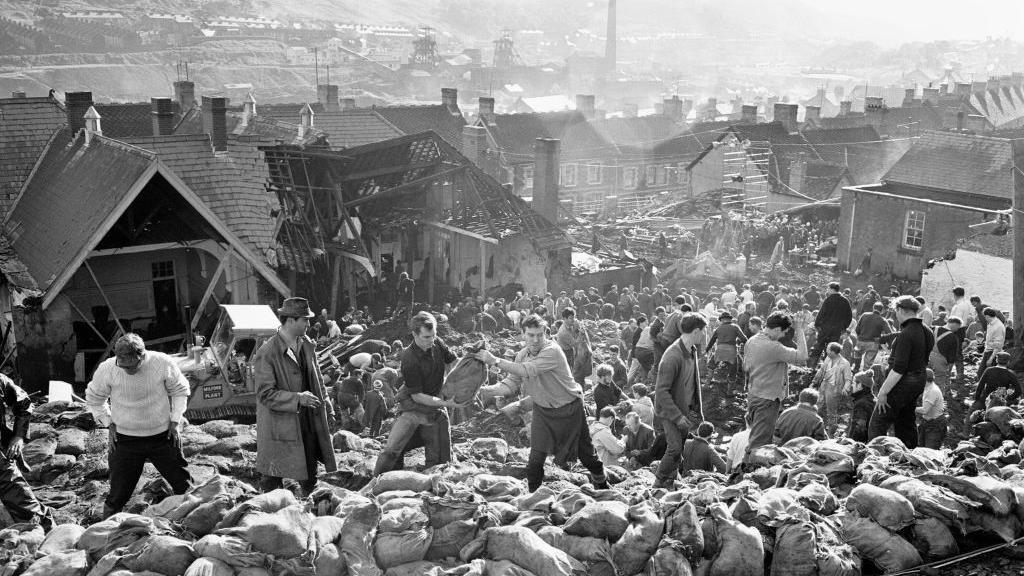
A total of 116 children and 28 adults were killed in the Aberfan disaster
- Published
More than 57 years have passed, but the memory of a small dead boy with his sweets clutched in his hand still gives Rob MacIntyre nightmares.
Rob and his three friends were some of the first on the scene following the Aberfan disaster.
On 21 October 1966 a colliery spoil tip collapsed, engulfing the village's primary school and surrounding houses, killing 116 children and 28 adults.
Rob and his friends were tasked with cleaning slurry from the bodies of about 20 children who had been taken to Capel Aberfan.
"It's something I've never got over, I was only 19 at the time," said Rob, who is now 77.
Today, the chapel is little more than a weathered and burnt-out shell.
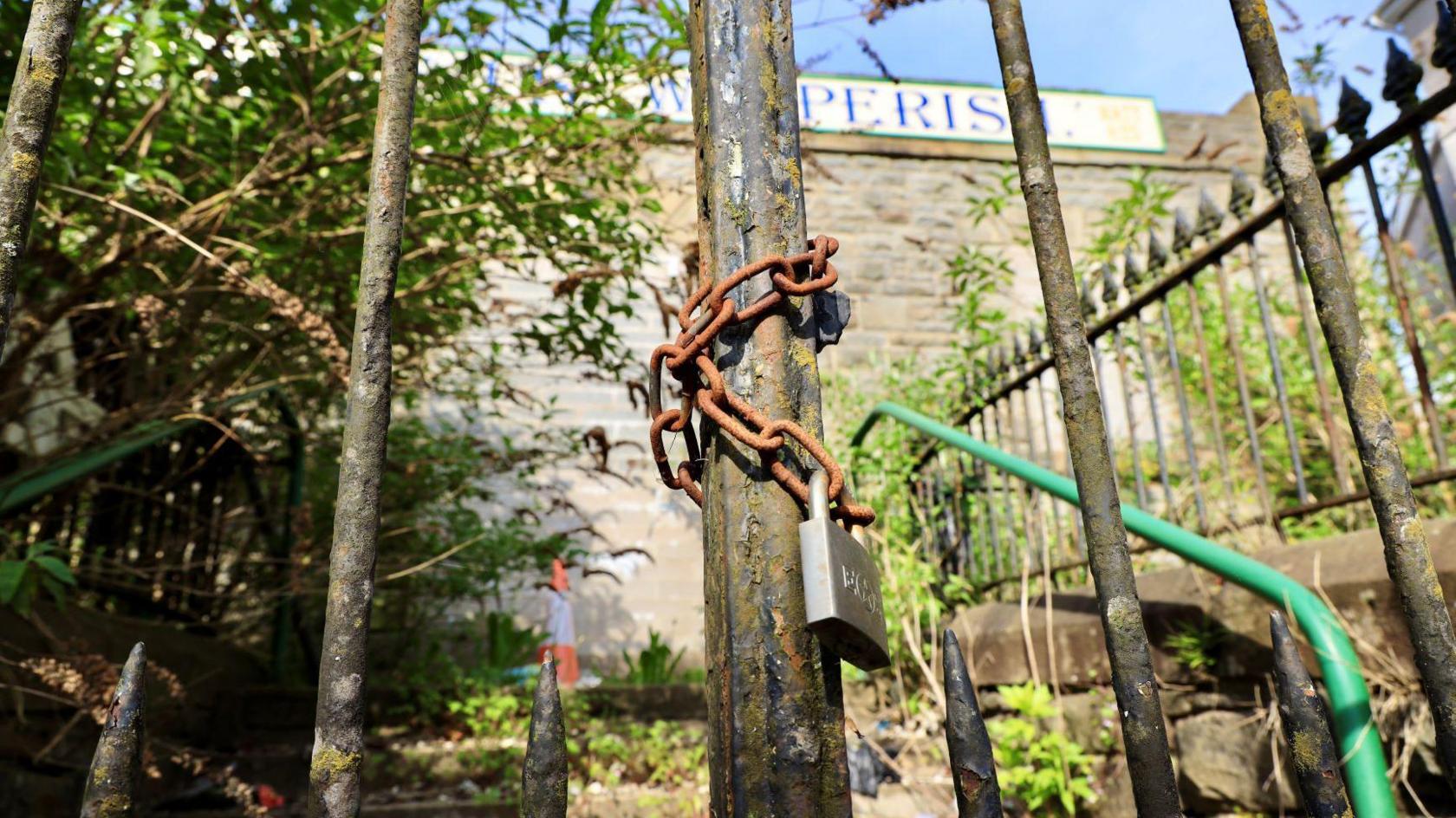
Capel Aberfan has fallen into ruin since a fire in 2015
Many of the bodies were taken to Aberfan's Bethania chapel, but once it was full Capel Aberfan was opened as a second mortuary.
Parents queued up and faced an agonising wait to see if their children's bodies had been found among the debris.
Earlier this year, in response to challenge under the Freedom of Information Act, Cadw revealed Capel Aberfan was one of 2,708 at-risk listed structures in Wales.
On the day of the disaster, Rob and his friends, who were in the navy, were on their way to pick up a helicopter in Brecon when they witnessed the spoil tip collapsing and engulfing everything in its path.
"We were on a high road that bypasses Aberfan and we saw it, we saw it sliding down, down through farms, down through houses... but we didn't know there was a school," he said.
"We said 'we've got to go and help them'. We were more or less the first ones there."
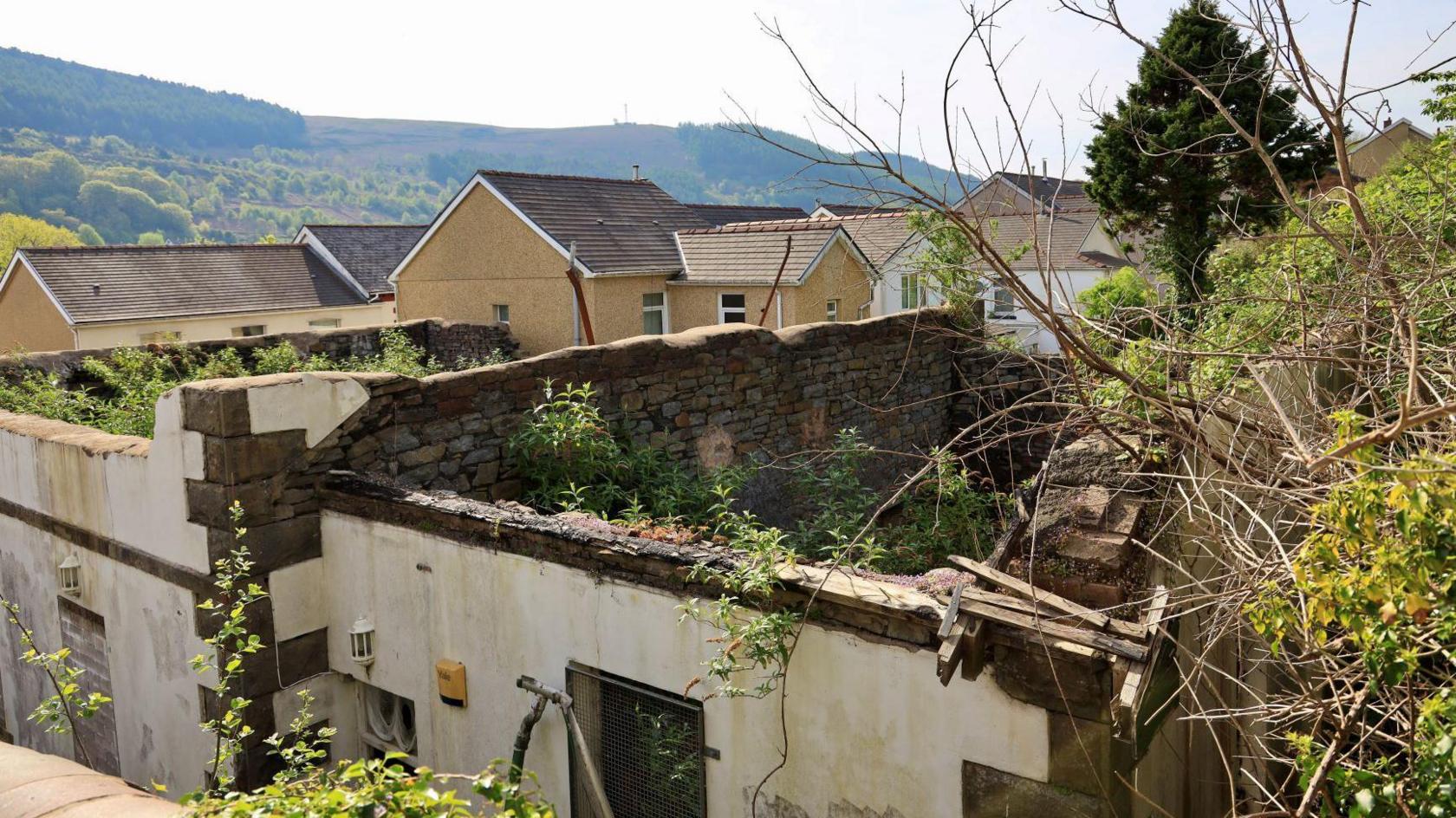
The roofless chapel is slowly being reclaimed by nature
Initially they tried to dig people out with their bare hands, but were then asked to go to Capel Aberfan to clean the bodies of about 20 children before their parents arrived to identify them.
One child Rob cleaned, a boy who was seven or eight, has stayed with him for the rest of his life.
"I still think about it nearly every day of the week," said Rob.
"He still had his sweets in his hand and I can still see the sweet in his hand - it was a Spangle.
"It broke my heart... I still have nightmares."
Aberfan disaster 50 years on. Video, 00:01:07
- Published21 October 2016
The team working to stop another Aberfan disaster
- Published15 November 2023
Aberfan teacher who rescued children dies aged 82
- Published31 March 2023
It was not long before parents began arriving to identify the bodies.
"I just couldn't face them," said Rob.
"'Have you seen my little Cheryl or my little Colin?'... These mothers were on their knees and we couldn't do anything.
"One girl was 21 or 22 and her son was there and she said to me 'where was God in all this?' I don't know where God was but where was mankind? I was boiling with anger."
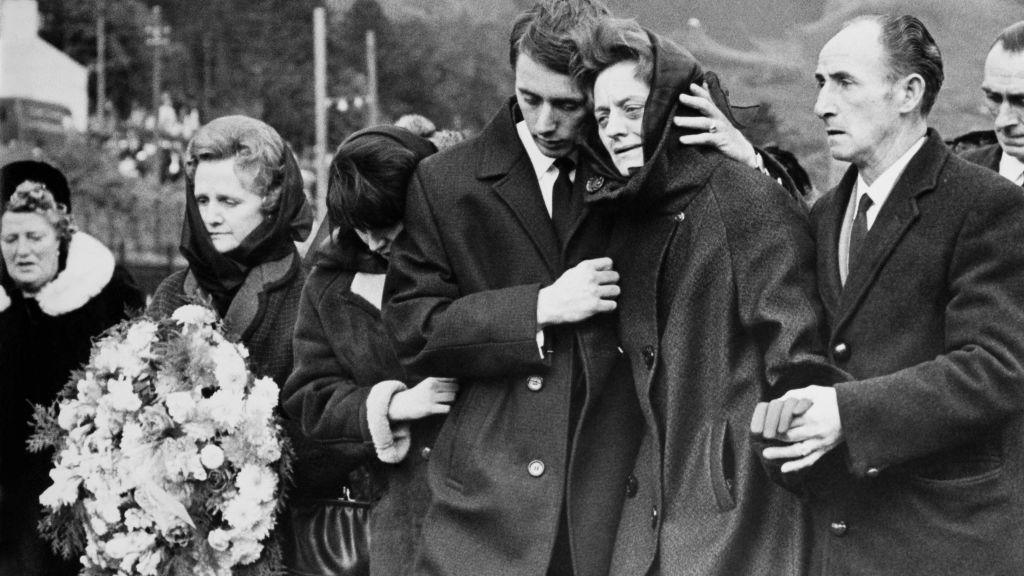
A mass funeral for 81 children and one adult was held a week after the tragedy
In Rob's military career he served in Bosnia, Iran and Yemen and had "seen some horrific stuff, but I never ever came across anything so grotesque as that".
He added: "I don't think anybody knows to this day the real effect it had in that community."
In 2015, almost five decades after the disaster, the chapel was destroyed by a fire.
Arsonist Daniel Brown, then 27, was jailed for five years after admitting starting the blaze.
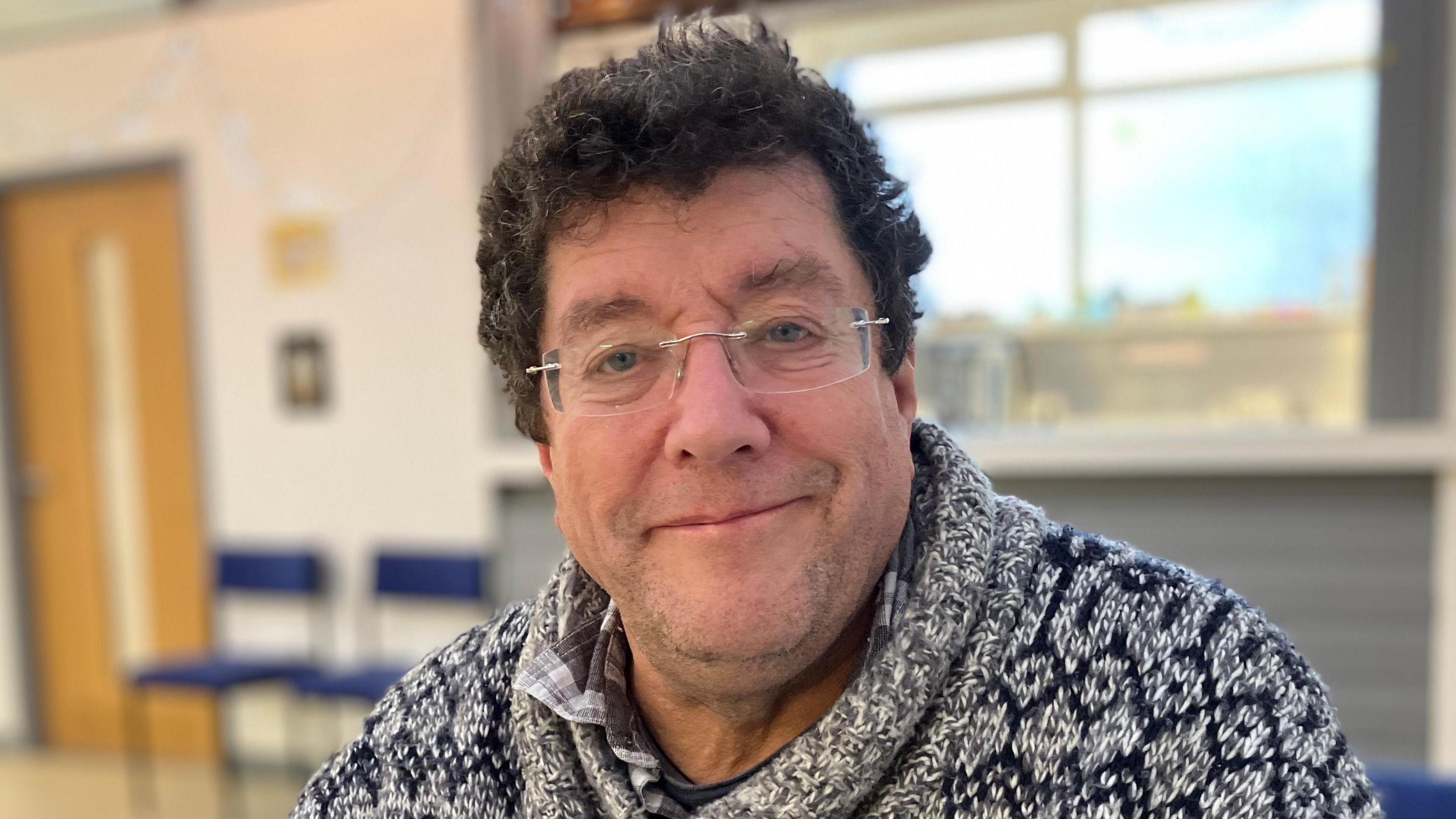
David Pritchard was the pastor at Capel Aberfan when it was destroyed in a fire
The then-pastor of the chapel, David Pritchard, had given him a set of keys for the building as he had volunteered to clean it.
Instead he let himself in and set fire to a dust sheet before walking home.
David said the chapel's tragic history meant many in Aberfan had been reluctant to enter the building.
"They couldn't. How could they? There was always a lot of pain... the scars are still there."
He said the disaster led many to lose their faith.
"It really hit Wales spiritually in a terrible way. I personally think tens of thousands gave up believing in God," he said.
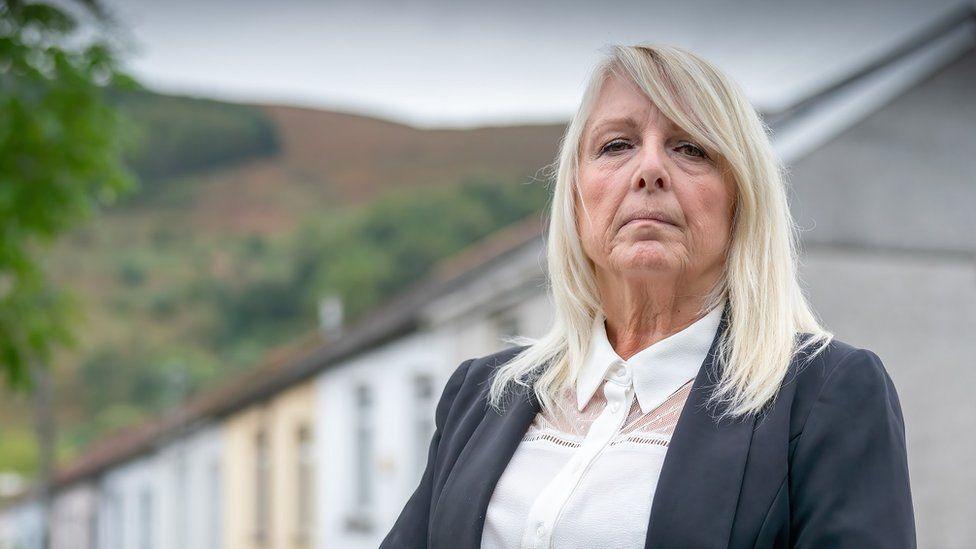
Gaynor Madgwick was injured in the Aberfan disaster and her brother and sister were killed
"My parents became atheists overnight," said Aberfan survivor Gaynor Madwick.
"People question: 'Why did God let this happen?'"
Gaynor, then aged eight, was one of the 240 schoolchildren at Pantglas Junior School when it was engulfed by the deadly wave of coal and sludge.
Her brother Carl, seven, and sister Marilyn, 10, were killed. Gaynor was severely injured.
She does not know if her siblings were taken to Bethania or Capel Aberfan but, in the years that followed, said Capel Aberfan remained important to the community, somewhere some would go for solace and people would gather for weddings and christenings.
"You can see why, when this iconic building burnt down, it was absolutely devastating to our community," she said.
Now, she said the building was "just an ugly eyesore and, in time, it's going to crumble".
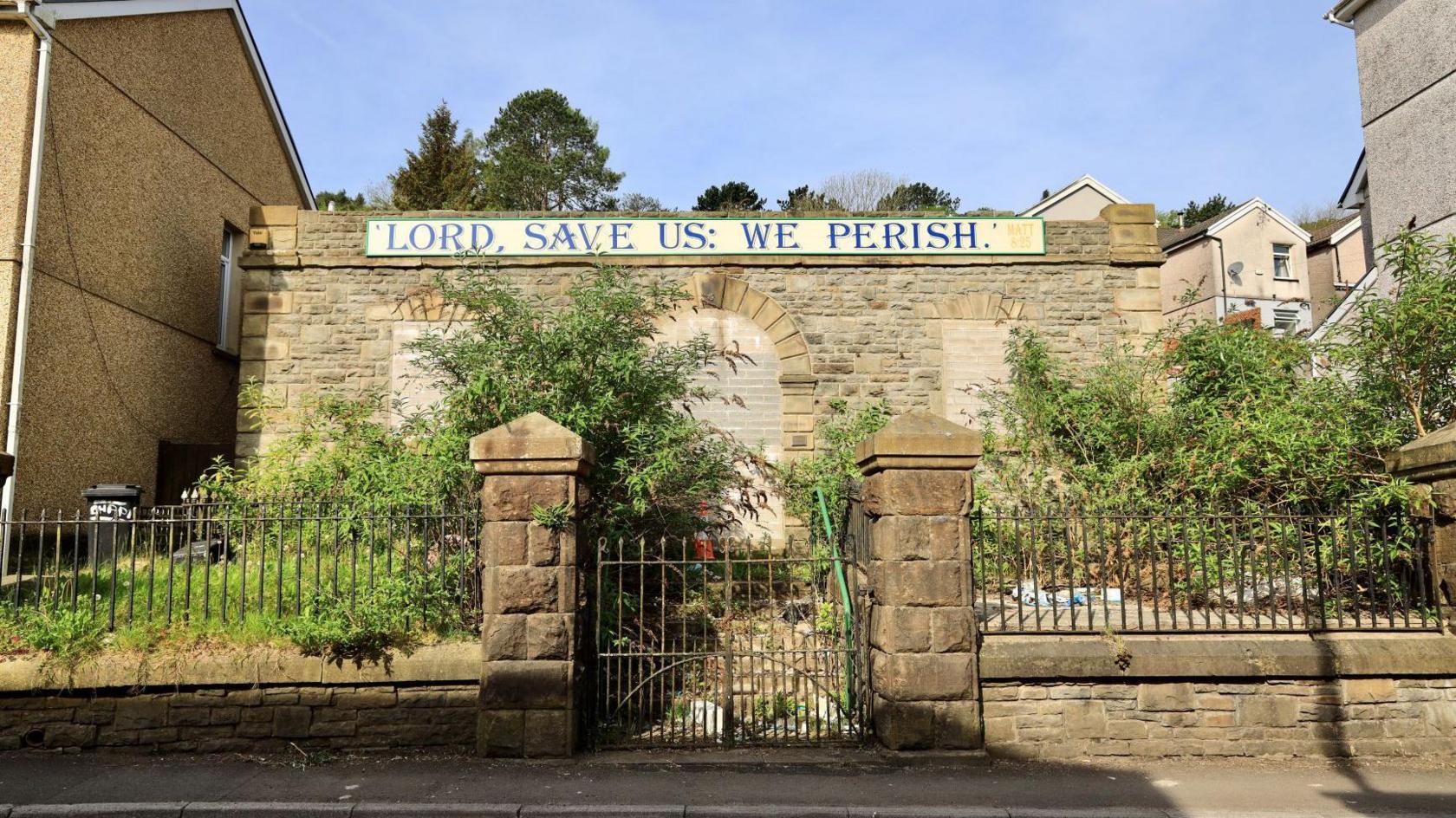
The chapel acted as a mortuary following the disaster
She said if funds were available she would like to see it rebuilt and turned into a historical centre.
This would allow artefacts and personal items donated by survivors and victims' families to be displayed and preserved and meant they were "in one place, not spread around different museums".
David doesn't want to see the chapel completely rebuilt, but believes it should be preserved in some state.
"Just to have a beautiful memorial - a beautiful garden so you'd go in and there'd be benches and a flower garden," he said.
"Somewhere for people to sit and contemplate. That would be really lovely."
For Rob, the building is too painful a reminder of the tragedy.
"I don't want that chapel to exist... I've seen the horrors in there."